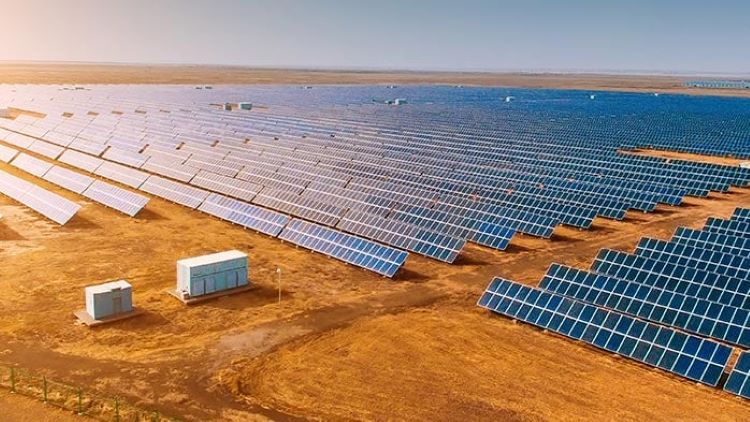Decarbonization

June 18, 2025
Tax incentive rollbacks could dent aluminum demand for solar sector
Written by Nicholas Bell
The U.S. solar industry’s rapid growth is translating into a surge in aluminum demand for photovoltaic PV) support structures.
According to the latest report from Solar Energy Industry Association with Woods Mackenzie, the U.S. installed 10.8 gigawatts (GWdc) of new solar capacity in Q1 2025, which accounted for 82% of all new electricity-generating capacity added to the grid that quarter.
At an average requirement of about 21mt of aluminum per MW of PV capacity installed, this quarterly addition alone implies roughly 226,800t of aluminum used in module frames, mounting racks, and brackets. Even residential solar contributes significantly: a typical 10kWp rooftop system uses around 419 pounds in its frame and racking.
Every gigawatt of PV deployed represents a substantial volume of extruded aluminum, typically 6XXX series, for structural components.
Utility-scale projects make up the bulk of U.S. solar growth. It is worth pointing out that these larger installations utilize less aluminum as a share of the total installation than the residential sector.
Utility scale projects were roughly 85% of the solar installation growth in Q1 2025, while the remainder would fall under the “distributed PV” category.
Residential installations need a corrosion-resistant, lightweight material that can also sit atop a home or building’s roof without caving in the ceiling – like aluminum.
To be clear, decentralized PV installations are not just houses in the suburbs, it’s also installations on commercial buildings and community solar programs. But even if residential installations comprised the sector, it’d equate to around 80,000t per year.
SEIA published the data at a time when the renewable energy industry at large could be facing significant changes to the sector’s tax incentive’s structure outlaid by the “One, Big, Beautiful Bill”, currently in the drafting and markup phase.
Senator Mike Crapo, the chairman of the U.S. Senate Finance Committee released the text of the draft legislation on June 16 as part of a broader budget reconciliation bill.
The bill, if passed, would repeal portions of the Inflation Reduction Act’s clean energy tax credits, including the Investment Tax Credit and domestic content bonuses. Under the current policy landscape, the U.S. is projected to add roughly 40 GW of PV capacity per year through 2030, according to SEIA and Woods Mackenzie.
Using earlier estimates of 21t per MW of PV capacity, that would translate to around 840,000t of aluminum a year at the projected pace. If the proposed credit cuts take effect, SEIA estimates that the U.S. could lose 2-5 GW of solar deployments annually, which would equate to 42,000-105,000t of aluminum per year – around a 5-12% decline of end market aluminum demand.
The end demand would primarily impact extrusions used for racks, brackets, and support frames comprised of 6005, 6061, and 6063 aluminum alloy.
Coupled with new antidumping and countervailing duties on PV cells from Southeast Asia, as well as the broader tariff scheme implemented over the last couple of months, prompted SEIA to revise their five-year outlook on residential solar deployment to a 14% decline in their Q2 2025 Market Insights report.
Near-term market outlook may be shaped significantly by policy developments, no matter what the long-term trajectory is for the U.S. solar industry.
The solar sector remains one of the most aluminum-intensive growth markets in North America, driving demand for an entire subset of extrusions. Potential changes to tax credits and trade policy could meaningfully affect deployment volumes and structural aluminum consumption by extension.
For bracket manufacturers, extruders, and billet casters serving the solar value chain, scenario planning around 5-12% downside risk in PV-linked demand may be prudent.







